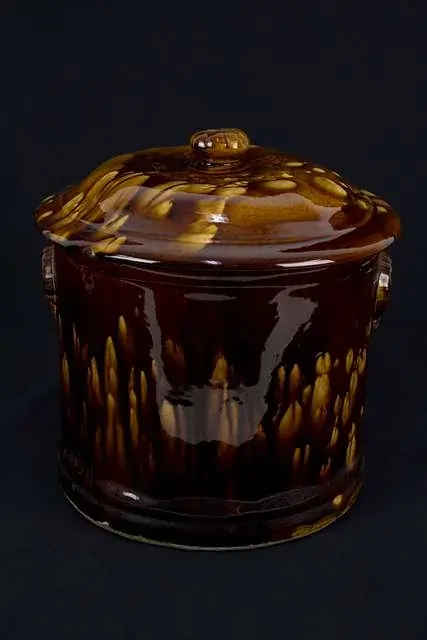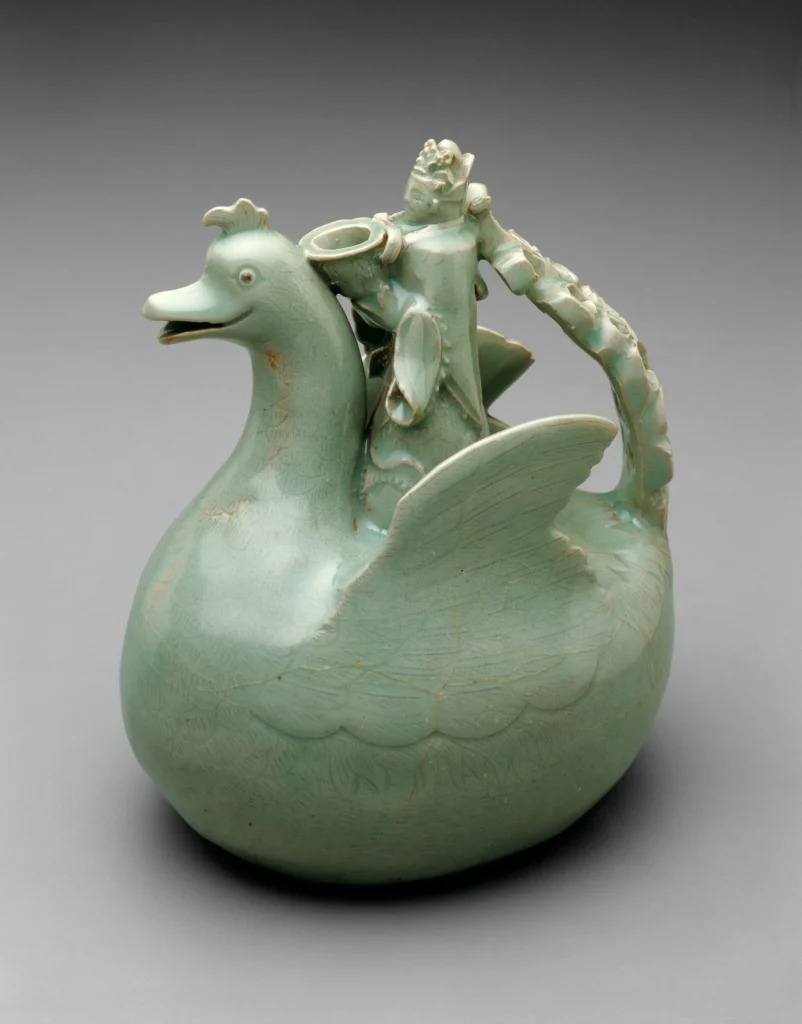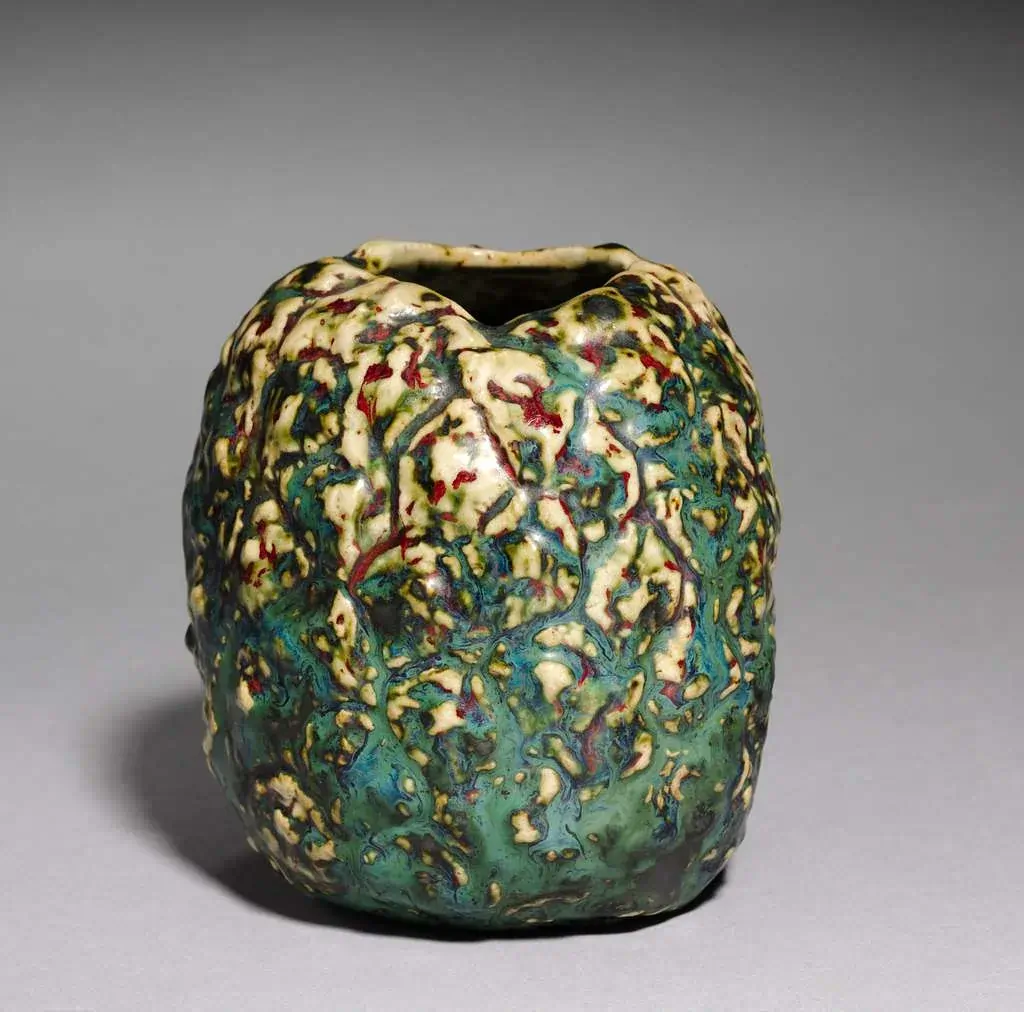Rockingham pottery is widely recognized as a milestone, in the evolution of production during the 19th century. This unique brown glazed earthenware gained popularity across Britain and America. Became a feature in households during the Victorian era due to its blend of functionality and aesthetic charm. The intricate mottled texture of Rockingham pottery represented a progression, in craftsmanship throughout the 1800s.
The making of Rockingham pottery employed techniques that included the application of slip to achieve its distinctive brown hue. Renowned redware pottery artisans, in England and North America embraced these practices. Developed their regional variations of the style. This detailed review delves into the origins of Rockingham pottery its production methods, patterns and what collectors should consider when acquiring pieces from this ceramic heritage.
Table of Contents
ToggleOrigins and Early Development of Rockingham Pottery
The beginning of Rockingham pottery can be traced back, to a pottery workshop founded in 1745 on the estate of the Marquis of Rockingham, in Yorkshires Swinton area of England. Initially specializing in earthenware items the workshop saw changes when the Brameld family took over operations in 1806. During their stewardship the pottery introduced a glaze that would ultimately be closely associated with the Rockingham brand.
The Swinton Pottery and the birth of Rockingham glaze
The special Rockingham glaze was developed through trials, at the Swinton factory. Is known for its chocolate brown hue and interesting spotted look. To achieve this effect on pottery pieces two techniques were used – either dipping them in a glaze followed by an iron based brown coat or putting on a brown glaze first then adding clear glaze for a unique contrast. By the year 1826 the factory had changed its name to Rockingham Works as it grew into a producer, in the industry.
Expansion to North America
In the mid-1800s English potters moving to America played a role, in introducing Rockingham pottery methods to the United States. James Bennett from Derbyshire arrived in 1834. Played a part in setting up the initial American Rockingham pottery production, in East Liverpool, Ohio. American artisans creatively. Evolved the techniques crafting their unique styles of glaze application.
Key manufacturers and production centers
Major production hubs emerged on both sides of the Atlantic:
- Britain: Swinton works remained the primary center, with additional manufacturers in Derbyshire
- United States:
- East Liverpool, Ohio became the primary manufacturing center
- Trenton, New Jersey developed as a significant production hub
- Bennington, Vermont established itself as a notable manufacturing location
American producers adapted methods to craft versions of the initial British patterns by introducing new techniques, like splashing and dripping as well, as using multiple glazing methods to achieve distinct aesthetic outcomes while preserving the signature brown hue that distinguished Rockingham pottery.
Characteristics and Production Techniques
The skilled craftsmanship of creating Rockingham pottery required techniques, for glazing and precise methods of production setting it apart from ceramic practices in the 1800s.
Glazing methods and variations
The unique speckled brown look of Rockingham pottery was created using two glazing methods; one involved applying an underglaze to pieces that were already fired once and then adding splashes of brown Rockingham glaze before firing them again; the other technique included dripping clear glaze, onto vessels that were already coated with brown glaze to produce distinct patterns. These techniques resulted in depth. Shine in the pottery pieces; the richness of colors varied based on how thickly the glazes were applied and the specific patterns used during application.
Common clay bodies used
Rockingham pottery used types of clay, for their pieces. Earthenware and stoneware with colors usually ranging from buff to yellow hues. The firing temperatures showed a range of variations;
- Earthenware pieces fired at approximately 1200 degrees centigrade
- Stoneware required temperatures between 1200-1300 degrees centigrade
Relief molding and decorative motifs
Relief molding became a signature feature of Rockingham pottery, with details that changed over the years. The neoclassical designs like acanthuses were popular, in the 1830s and 1840s while more natural themes emerged in the 1850s and 1860’s.Notable decorative elements comprised of;
- Natural motifs: vines, corn, flowers, grapes
- Gothic architectural elements
- Hunting scenes and wildlife
- Patriotic symbols like American eagles
The intricate designs looked their best when thin layers of glaze were delicately brushed over the molded decorations to reveal the clay beneath and gather in the crevices to highlight the patterns intricacy effectively on the pottery’s surface with a contrast, between highlighted regions and colored sections.
Popular Forms and Designs
During the 19th century’s creations varied greatly in style and function; Rockingham pottery stood out for its blend of creativity and usefulness in both everyday objects and ornamental works of art featuring a unique brown manganese glaze that symbolized this specific ceramic style.
Iconic 'Rebekah at the Well' teapot
The iconic Rebekah at the Well teapot became a Rockingham piece after being introduced by Edwin Bennett in 1851.It featured a motif of a woman with a pitcher near a well while incorporating different details, like the pitcher design and surrounding landscape elements. The Bennett Company’s teapots stood out for their molding and uniform caramel glaze finish, continuing production until 1936.
Range of utilitarian and ornamental forms
Rockingham pottery encompassed an extensive array of both functional and decorative pieces:
- Utilitarian Items:
- Kitchen implements: pie plates, mixing bowls, baking dishes
- Dining pieces: mugs, pitchers, cow creamers
- Household items: candlesticks, spittoons, soap dishes
- Ornamental Objects:
- Decorative pieces: vases, picture frames, curtain tie-backs
- Architectural elements: doorknobs, fireplace mantle animals
- Artistic items: statues, porcelain plaques
Evolution of designs over time
In the 19th century production patterns underwent changes, over time according to findings indicating that out of around eighty different forms made by manufacturers only twenty two were commonly found at excavation sites By the 1880s production focused mainly on four main forms which were teapots comprising 29% spittoons at 22% pitchers at 20% and mixing bowls at 13%
There were differences, in the distribution patterns between rural areas when it came to kitchenware preferences. In regions you’d find baking dishes and bowls being used while urban areas leaned towards using items like teapots and pitchers for serving purposes. These differences were influenced by requirements and the social norms specific to each community with cities in the Midwest showing similarities to settings rather, than urban environments.
Identifying and Collecting Rockingham Pottery
For those who love collecting and admiring items of interest, like Rockingham pottery in its form must pay attention to various features and historical details to ensure authenticity is accurately determined. The intricate nature of this ceramic art form that has roots, in both American craftsmanship poses obstacles when it comes to confirming its origins and determining its worthiness.
Dating and attribution challenges
Identifying genuine Rockingham pottery pieces is primarily based on their attributes and production methods making it essential for collectors to scrutinize these distinguishing traits;
- Glaze characteristics: Earlier pieces show uniform brown glazing, while later works display more mottled patterns
- Clay body composition: Most authentic pieces use buff to yellow clay bodies
- Manufacturing marks: Look for signs of period-appropriate production methods
- Design elements: Compare motifs against known historical patterns
Marks and maker identification
Some Rockingham items may not bear makers marks; however; there are unique identifiers to look out for. British pieces typically feature backstamps imprinted with “Brameld” while American producers such, as J.E. Jeffords tended to mark their items than their counterparts. The Jeffords Company based in Philadelphia serves as a resource, for dating unmarked pieces.
Pattern numbers, in the range of 400 to 1800 often signify genuine British Rockingham pieces being produced at that time period; additionally a subset of pieces numbered 2/1 to 2/100 is also generally regarded as authentic. American items occasionally display location marks like “Bennington, VT “. Bear specific manufacturer labels such, as “Lyman, Fenton & Co.”
Factors affecting value and collectibility
The market value of Rockingham pottery depends on several critical factors:
- Condition Assessment:
- Network of crazing lines
- Presence of chips or cracks
- Quality of original glazing
- Integrity of relief decorations
- Historical Significance:
- Manufacturing period
- Rarity of design
- Historical documentation
- Regional significance
In today’s market scene, for these items fluctuate widely; you can find them priced from $375 to $4500 on about $895, per piece. Particularly sought after are those elegant standing poodles holding fruit baskets; they are highly valued for their scarcity and artistic quality. Thus fetch prices than other pieces.
It’s important to have experts verify items, without origins or makers signatures to determine their authenticity and worth with precision by examining details, like the glazing methods used and the type of clay involved in making them while ensuring they align with the manufacturing practices of that era.
Conclusion
Rockingham pottery represents the ingenuity of craftsmanship, during the century by blending the manufacturing styles of Britain and America with its unique brown glazed earthenware pieces. The transition from Swinton works in Yorkshire to large scale production hubs on both sides of the Atlantic highlights advancements, in glazing techniques and decorative methods. These progressions led to the creation of visually appealing pottery pieces that became elements of household ceramics during the Victorian era.
The tradition of Rockingham pottery lives on in today’s collecting communities with pieces fetching attention in the market scene. Collectors rely on analysis of glaze features and design elements to verify and assess the worth of these relics accurately. This longstanding ceramic artistry captivates both collectors and historians by shedding light on 19th century craftsmanship and societal tastes through its array of shapes and styles.
FAQs
- How can one recognize Rockingham pottery? Rockingham pottery is typically high-fired earthenware or stoneware, recognizable by its buff to yellow clay body and distinctive brown mottled and streaked glaze. It’s common for patches of the vessel’s body to be visible through the glaze.
- What are the common markings found on Rockingham pottery? The most frequent markings on Rockingham pottery include a red griffin accompanied by the inscription “Rockingham Works Brameld” and a puce griffin with “Rockingham Works Brameld Manufacturer to the King.” Occasionally, other mark variations may be present.
- What constitutes a Rockingham glaze? Rockingham glaze involves a specific process where the pottery, usually a buff to yellow earthenware or stoneware, is first dipped in a clear or yellow glaze. After drying, a brown iron-based glaze is splattered or dripped onto the vessel, creating its characteristic appearance.
- Can you provide a brief history of pottery? Pottery ranks among the earliest human inventions, predating the Neolithic period. Notable early ceramic artifacts include the Venus of Dolní Věstonice figurine from the Gravettian culture in the Czech Republic, which dates back to around 29,000–25,000 BC.



